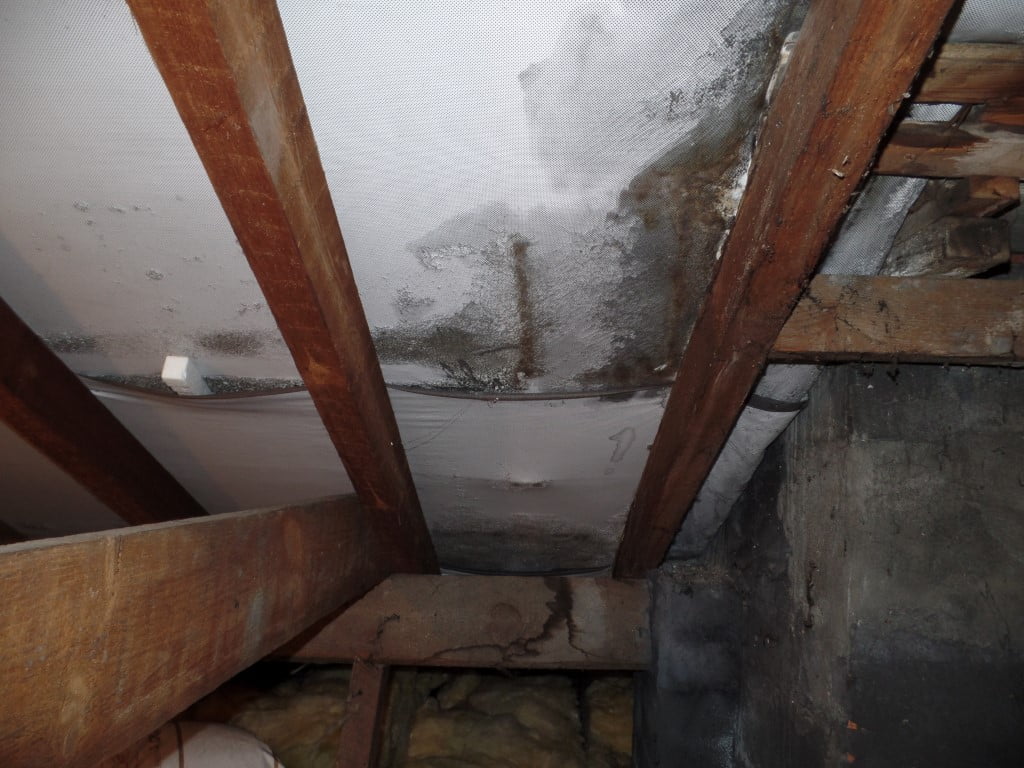Breathable felts

Breathable felts
The history of breathable felts.
Breathable felts were first thought about in the 1980’s. They started in Germany as a result of changes in their building standards. The first patents were made in 1983. However, such felts were not widespread in re-roofing in the UK until around late 1990’s. They began replacing the plastic grey Monarfoil felts which caused significant condensation in roof voids (Sarking felt or underfelting through time – Part 3). So, if you see a white, blue or green felt in the loft you know it is a modern felt and less than 25 years old. It may not necessarily be a breathable felt, but it can help to give an indication of the age the roof.
Although breathable felts are the optimal product to use today, some modern felts are not breathable. These rely solely on lots of other ventilation details being present. This will help the roof to breathe and reduce the effects of condensation in the timber components of the roof.
What are breathable felts?
Breathable felts are very clever when correctly laid. They are very strong made from non-woven polypropylene. They are resistant to UV degradation. Although if left exposed to the elements will eventually shred or rip. This is why eaves carriers became best practice. Changes to the British Standard 5534 in February 2015 included these plastic trays that hold the bottom of the felt up where it meets the gutter.
The problems with modern felts.
The makers are very specific about what other details are needed. Although these differ between manufacturers. These may include ventilated ridges, or hips. Where an air gap is left at the top of the roof to allow for better air flow. Vented soffits where the soffits have grills to increase air flow. These are often omitted in the mistaken belief that breathable felt on its own is sufficient. We have made a YouTube video of what happens if these details are omitted. https://youtu.be/GNsB8qc-_ns
The risk of overstretching felts is another challenge for roofers. The felt should drape over the rafters and have some sag. Clearly a roofer doesn’t measure the sag on each piece of felt. It would take forever to install a roof, but 10-15 mm is generally acceptable. Remember that the purpose of roofing felt is to divert back into the gutters any rain that is driven beneath the tiles by the wind. The correct sag allows that wind-driven rain beneath the tiles to run down the felt without touching the wooden battens and causing them to rot. You should be able to get your hand between the felt laps; if you can’t, it is too tight. There are visual signs of this defect; mould growth to newer felts is a symptom of over-stretching. Once stretched this will shorten the lifespan of the roofing battens and the roof will require re-felting again.
